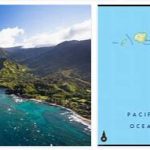The John A. Burns School of Medicine (JABSOM) at the University of Hawaii Manoa is a leader in medical education, research and patient care. JABSOM is the only public medical school in Hawaii and has been educating doctors since its founding in 1965. The school offers a variety of educational programs, including an MD program, PhD programs in biomedical sciences, and Master’s degrees in Public Health and Tropical Medicine. The school is committed to providing high-quality health care to all residents of Hawaii as well as training future physicians who are dedicated to serving their communities. JABSOM has also established many partnerships with hospitals throughout Hawaii, allowing students to gain hands-on experience through clinical rotations. Additionally, the school offers research opportunities for students interested in biomedical sciences or public health research.
Here we focus on key data about University of Hawaii Manoa John A. Burns School of Medicine, including admissions profiles such as application fee, admissions decision dates, admissions statistics such as average MCAT/GPA scores, undergraduate majors, and national ranking information of University of Hawaii Manoa John A. Burns School of Medicine. Also covers in-state and out-of-state tuitions as well as scholarship and grant opportunities offered by University of Hawaii Manoa John A. Burns School of Medicine. See best business schools in Hawaii.
Address: 651 Ilalo Street, Honolulu, HI 96813
Phone Number: (808) 692-1000
Email: medadmin@hawaii.edu
Website: http://jabsom.hawaii.edu
Acronym & Abbreviation: https://www.abbreviationfinder.org/acronyms/uoh_university-of-hawaii.html
Admissions: University of Hawaii–Manoa (Burns)
| Fall 2020 Admissions Information | |
|---|---|
| Director of Admissions | Dr. Satoru Izutsu |
| Application fee | $50 |
| AMCAS application accepted | Yes |
| Early application deadline | 06/01 |
| Application deadline | 01/01 |
| Secondary application required | Yes |
| Personal interview required | Yes |
| Regular application acceptance notification begins | 10/15 |
| Regular application acceptance notification ends | N/A |
| Number of weeks within which students must respond to offers of admission | 2 |
| Deferred entrance available | Yes |
| Deposit to hold place in class is due | at the time of offer |
| Early decision plan for admission offered | Yes |
| Early decision plan application period begins | 06/01 |
| Early decision plan application period ends | 08/01 |
| Early decision plan notification date | 10/01 |
| Starting month for the class of 2020-2021 | July |
| Fall 2018 Admissions Statistics | |
| Total admissions data | 1895 applied, 231 interviewed, 83 were accepted, 62 enrolled |
| In-state admissions data | 195 applied, 146 interviewed, 71 were accepted, 56 enrolled |
| Out-of-state admissions data | 1700 applied, 85 interviewed, 12 were accepted, 6 enrolled |
| Women’s admissions data | 871 applied, 133 interviewed, 48 were accepted, 34 enrolled |
| Minority admissions data | 719 applied, 133 interviewed, 52 were accepted, 42 enrolled |
| International admissions data | 121 applied, 13 interviewed, 4 were accepted, 3 enrolled |
| Fall 2018 GPA and MCAT Scores | |
| Average undergraduate GPA | 3.62 |
| Oldest MCAT considered | N/A |
| Average MCAT score | 9.7 |
| Average biological MCAT score | 10.0 |
| Average physical sciences MCAT score | 10.0 |
| Average verbal reasoning MCAT score | 9.0 |
| Average writing MCAT score | P |
| Undergraduate Majors | |
| Required undergraduate coursework | biology, organic chemistry, physics, molecular and cell biology, biochemistry, general chemistry |
| Percent of entering class with undergraduate major in biological science | 52.0% |
| Percent of entering class with undergraduate major in physical science | 10.0% |
| Percent of entering class with undergraduate major in social sciences/humanities | 14.0% |
| Percent of entering class with undergraduate major in other health professions | 8.0% |
| Percent of entering class with undergraduate major in mixed disciplines, double majors, and other areas of study | 16.0% |
| Combined Degree Programs | |
| Combined college/M.D. program offered | No |
| Combined degree programs offered | N/A |
| Number of years to complete combined college/M.D. program | N/A |
| Combined college/M.D. program URL | N/A |
Tuition & Financial Aid: University of Hawaii–Manoa (Burns)
The University of Hawaii Manoa John A. Burns School of Medicine offers a number of tuition and financial aid options to help make medical school more accessible and affordable for students. Tuition for the MD program is currently set at $50,207 per year for in-state residents and $60,607 per year for out-of-state residents. This does not include additional fees such as student activity fees and health insurance. Financial aid is available in the form of scholarships, grants, loans (federal and private) and work-study programs. The school also offers need-based grants to students who demonstrate financial need. In addition, the school provides a variety of loan repayment options to help students repay their loans after graduating from medical school. The school also has an emergency loan fund that can be used by students in times of financial hardship or emergency.
| Financial Aid Contact Information | |
|---|---|
| Financial aid director | Ms. Linda J. Clemons |
| Financial aid phone | (808) 956-7251 |
| 2018-2019 Tuition and Fees | |
| 2018-2019 Tuition | In-state: $22,632, Out-of-state: $45,624 |
| Required fees | $380 |
| Room and board | N/A |
| 2018-2019 Financial Aid | |
| Percent of students receiving any financial aid | N/A |
| Percent of students receiving loans | N/A |
| Percent of students receiving grants/scholarships | N/A |
| Percent of students receiving work study | 0% |
| Average indebtedness for 2007 graduates who incurred medical school debt | $87,320 |
Ranking: University of Hawaii–Manoa (Burns)
The John A. Burns School of Medicine at the University of Hawaii Manoa is ranked in the top 10 percent of medical schools nationwide. It is ranked number one in the United States for its primary care program, and number two for its rural medicine program. The school also ranks highly for its research, with an emphasis on public health, tropical medicine and biomedical sciences. The school has a long history of excellence in teaching, research and patient care that dates back to its founding in 1965. It offers a range of educational opportunities for students including MD/MPH dual-degree programs, joint degree programs with other universities, and medical student exchange programs. Students are taught by experienced faculty from a variety of disciplines including medicine, nursing, public health and dentistry. The curriculum includes courses in clinical medicine as well as basic science classes such as anatomy and physiology. Students have access to state-of-the-art technology such as simulation labs and electronic patient records. The school also offers an array of clinical experiences through its affiliated hospitals and clinics where students can gain hands-on experience working with patients under the supervision of faculty physicians.
| Research Ranking | |
|---|---|
| Research score | N/A |
| Research peer assessment score (5.0 highest) | 2.1 |
| Research assessment score by residency directors (5.0 highest) | 2.7 |
| Total amount of NIH funds granted to medical school and affiliated hospitals (in millions of dollars) | $17.0 |
| 2018 NIH research grants per faculty member (in thousands) | $65.9 |
| Primary Care Rankings | |
| Primary care score | 49 |
| Primary-care peer assessment score | 2.6 |
| Primary-care assessment score by residency directors | 3.1 |
| Average 2016, 2017, and 2018 graduates entering primary-care specialties | 50.0% |
| Ranking Admission Statistics | |
| Average undergraduate GPA | 3.62 |
| Average MCAT score | 9.7 |
| Acceptance rate | 4.4% |
| Full-time faculty / student ratio | 1.0 |
| Total medical school enrollment | 253 |









